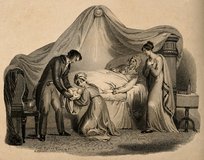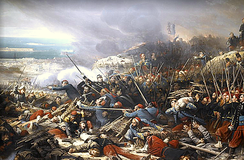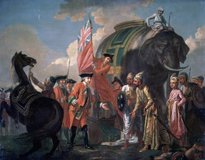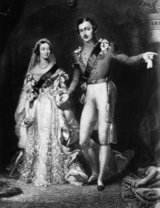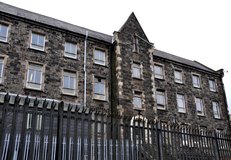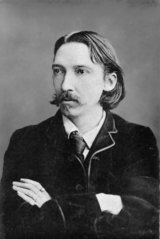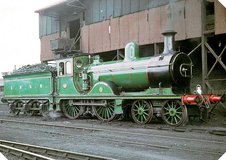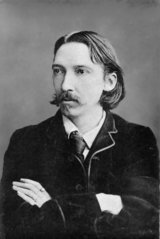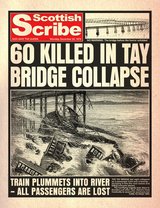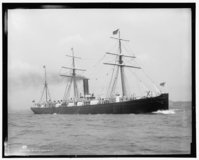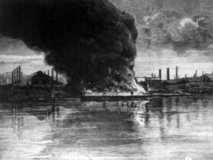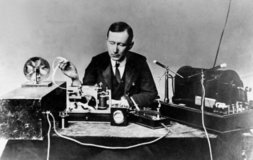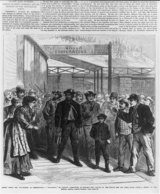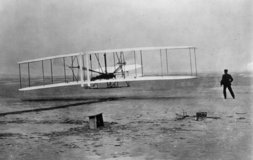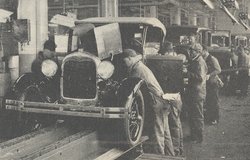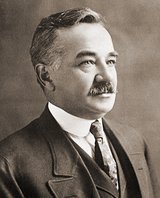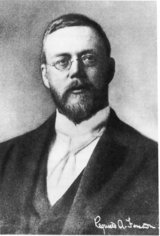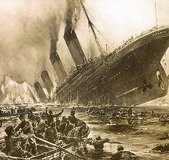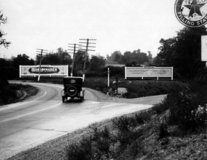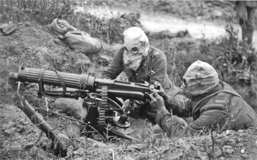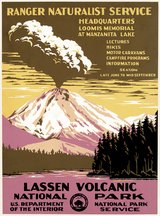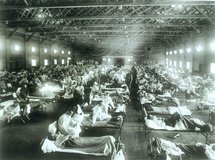©2026 HistoryLines, 2270 US Highway 30, Oswego, IL 60543.
Brown Judge
-
Childbirth
-
Childhood
-
Clothing
-
Commerce
-
Communication
-
Diet
-
Education
-
Entertainment
-
Holidays
-
Household
-
Hygiene
-
Marriage
-
Medicine
-
Military
-
Politics
-
Religion
-
Transportation
-
Brown is born in County Londonderry, Northern Ireland, United Kingdom
-
Residents of the Scottish Highlands are forced off their land
-
The Opium Wars are fought between Great Britain and China
-
Brown's future wife, Sarah Phillips, is born 5 months after Brown.
-
Millions of people lose their lives and homes to the devastating Irish Potato Famine.
-
Britain, France, and the Ottoman Empire clash with Russia in the Crimean War
-
India was placed under British rule in 1858.
-
In 1866, Brown marries Sarah Phillips.
-
Living in Scotland
-
The Irish Republican Brotherhood stages a revolt against British rule in Ireland
-
60 train commuters die when a storm brings down the Tay Bridge outside Dundee.
-
Emigration to America
-
The Wharton School of Business is established in Philadelphia, Pennsylvania.
-
Time zones are introduced in the United States
-
12 people are killed in labor strike clash in Homestead, Pennsylvania
-
Plessy v. Ferguson case legalizes separate facilities for blacks and whites across the U.S.
-
Guglielmo Marconi invents radio
-
Massive strike sweeps coal country
-
The United States declares war with Spain in the Caribbean
-
US Steel Corporation is formed
-
Mining strike shuts down mines for the summer
-
The Wright brothers fly the first heavier-than-air aircraft
-
The new Ford Motor Company makes the first widely affordable car
-
An explosion in the Harwick mine kills 179 Pennsylvanians
-
Hershey's factory opens in Pennsylvania
-
The first radio broadcast is sent from Massachusetts
-
The RMS Titanic sinks after hitting an iceberg in the north Atlantic Ocean
-
America's first transcontinental highway is built
-
Considered the war to end all wars, the Great War begins
-
President Wilson creates a new agency to protect America's parks
-
Virus spreads around the world
-
Brown dies
By the time of Brown's birth, male midwives and formally trained medical doctors were also allowed to enter the labor room—a development that broke a centuries-old custom, as giving birth had previously been considered the domain of women. Despite this, in poor, rural parts of Ireland, most children were delivered only with the help of a handywoman and, possibly, a trained midwife. Although methods of birth control had been somewhat widely known in previous centuries, by this period, the Catholic Church was growing in power, and there was a conservative backlash against such practices in Ireland. As a result, women often married young and had a large number of children. That number decreased after the Great Famine, but remained higher than in the rest of the United Kingdom.
As scientific understanding increased, innovations such as forceps and more efficient and comfortable birthing chairs were included in the delivery, particularly in progressive urban areas. However, lack of sanitation and anesthesia still made birth a painful, dangerous endeavor. While the mortality rate for children remained high—ranging from ten to thirty percent depending on the location—the innovations in technology paved the way for better tools and anesthetics, which would ensure safer procedures for Brown's descendants.
Work was often divided by gender roles, with girls learning basic cooking, cleaning, and other duties to help run a home, while boys helped harvest crops, hunt, and learn a trade. The experiences of a child were closely related to the economic status of their families. Many middle-class families began to adopt a view of childhood which stressed opportunities to grow and explore their interests and unique personalities. Poorer families rarely had this luxury, and children were often put to work at an early age to help support the entire family. While corporal punishment was more frowned upon than in generations past, Brown still would have known kids who suffered physical consequences for disobeying their parents. Criminal charges for such treatment were very rare.
In their more carefree moments, children around Brown played with a variety of toys and games, including tops, jacks, cards, charades, checkers, chess, and badminton. They also enjoyed physical games, such as the tag-like "British Bulldogs," or games of skill such as "Hoops." Beginning in the 1880s, the Gaelic Athletic Association (GAA) encouraged children to play traditional Irish games, such as hurling, where wooden clubs were used to "hurl" a ball - called the sliotar - through the opponent's goalpost, helping these sports reach new levels of popularity. Boys might also have enjoyed playing soccer, Gaelic football, or rugby, especially those attending boarding school. Wealthy girls in Brown's town played with elaborate dollhouses, while less fortunate girls would look through store windows and long to have them. Young boys often played with toy soldiers made from tin or lead.
For many in Brown's community, however, education was considered a luxury more than a necessity, and formal schooling was simply not an option for some children. Families needed the additional income a working child could provide, and many poor children never learned to read or write. Children at home learned how to function on a farm or run a household.
An apprenticeship was a popular option for many young men Brown knew at the time, as it allowed them to learn a particular trade or profession without adding to the financial strain of a family. Apprentices could start as young as 12 and received board, food, and clothing from the master in exchange for their labor.
After grammar school, boys had the opportunity to attend one of Ireland's universities, such as Trinity College, Magee College, or Albert Agricultural College. Wealthy families hired tutors for their girls, who were taught better home management rather than academics. In an attempt to gain the loyalty of Catholics during the French Revolution, the king allowed the construction of a seminary in the town of Maynooth, known as St. Patrick's Seminary. Although Catholics were now allowed to attend schools such as Trinity, the Catholic Church itself forbade members of its flock from enrolling.
In the rural countryside, many used the holiday as an opportunity to whitewash their farm buildings to begin the new year with a fresh start. The holiday season ended on January 6th with "Little Women's Christmas," a day in which women were allowed to leave their household and all their responsibilities behind to enjoy one another's company. The Irish also held a celebration called "Hunting the Wren," where a wren was led around town on a leash. In Northern Ireland, Presbyterians opposed the celebration of Christmas, while Anglicans celebrated it similarly to their Catholic neighbors. As the 19th century progressed and Christmas became more family-oriented, it was more common for Presbyterians to celebrate it as well.
St. Patrick's Day was an important church holiday, as St. Patrick was the patron saint of Ireland, and members of Brown's family attended Mass. In Northern Ireland, St. Paddy's was celebrated mainly by the Catholic nationalist community; Protestant Unionists viewed it as a nationalist holiday and not worth celebrating. Easter Sunday was celebrated with a Mass, followed by a large feast at home. After the main Easter feast, eggs were given to children who had not broken the Lenten fast.
During the rest of the year, seasonal holidays were held, including St. Brigid's Day (or St. Bride's Day) and Halloween, each corresponding to an ancient Gaelic festival to mark important days throughout the year. St. Brigid's Day marked the beginning of spring on February 1st, and was celebrated by the weaving of crosses from rush, thought to bring good luck to the household. People also watched to see if badgers or other animals came out of hibernation in order to predict the length of the winter. Halloween, still known to some as Samhain, was celebrated with children dressed in costumes to beg for treats from the neighbors. Traditional Jack O' Lanterns were carved out of turnips.
While a few wealthy city dwellers had indoor plumbing (and indoor, flushing toilets!) by the end of the 1800s, most families around Brown still used outhouses or chamber pots when he was young. They also fetched bath and cooking water from nearby rivers and streams, heating it over a stove. Contaminated water, combined with the high cost of housing and cramped living quarters in cities, facilitated the spread of diseases such as tuberculosis and diphtheria. This problem had been made worse by the Irish Potato Famine (1845 to 1852), which drove impoverished farmers into dirty living and working conditions in cities like Dublin and Belfast. Throughout the period, Dublin possessed some of the most notorious slums in Europe, known for their unclean conditions and the many resulting deaths that occurred there.
Those who lived in the northern part of Ireland were primarily Protestant, though some belonged to the official Church of Ireland, and others were Presbyterians. Presbyterians were often mistrusted by the Anglican authorities and the Crown for their part in the Rising of 1798, and the fact that many leading radicals were Presbyterian. However, as the century progressed, the rift between the two Protestant communities mended.
Although Catholics were largely poor tenant farmers, many of the restrictions which had prevented them from practicing their faith had been rescinded, and the Catholic Church had become an ally of the crown. No matter which faith he practiced, there was a shortage of churches and preachers across the island during Brown's lifetime, with roughly one clergyman to every 2,100 Irish citizens. However, men who wished to become ministers or priests could now train in Ireland. Anglican ministers could study at Trinity College in Dublin; Catholic priests could go to the seminary in Maynooth; and Presbyterian ministers were trained at Queen's College in Belfast, after its opening in 1845.
Women who did marry wore dresses made of muslin or calico; wealthy brides could choose silk gowns. Grooms wore their best clothes in any color, including boots and a cloak. Early in the century, brides in Brown's family wore pinks and purples, with a corset and crinoline in pastel colors. After Queen Victoria's wedding in 1840, however, women all over the world followed her lead and wore white. Brides carried a bouquet of flowers, which also adorned their hair and dresses.
After the wedding, society continued to uphold traditional family roles. Brides were expected to become mothers to five or six children and to keep an orderly home, while husbands worked and provided for the family. Divorce was possible but very expensive, and granted far more easily to men than women.
Though the biggest meal of the day used to be around noon, by Brown's time, the new realities of the industrial era—and better options for lighting homes and preserving food—moved dinnertime to the evenings. Soups and stews like "Dublin Coddle," made of sausage, potato, bacon and onions, and Irish stew with mutton, were popular and easy to prepare in bulk. Large breakfasts before work also became popular. Though some people drank water or milk from livestock, alcoholic drinks like beer and whiskey were consumed by many Irish citizens. By the 1830s, Dublin's famous Guinness brewery was already the largest in the country.
During the Great Famine of the 1840s, the types of foods available to many Irish people shrank. As 60% of the nation's food needs were met by the potato, year after year of poor harvests brought mass starvation. Though the wealthy were able to weather the storm much more successfully, nearly one-eighth of the population of Ireland starved to death. Many other fled for a new life in America or elsewhere.
The transportation of food by rail and the development of refrigeration later in the 19th century dramatically changed how the Irish could prepare their food and store leftovers. Some people began cooking food in an iron cooker called a range, which was cleaner and safer than cooking on an open flame under the chimney. Meanwhile, improved plumbing and sanitation was finally making the water drinkable in some developing towns.
Doctors also developed new ways to improve their patients' comfort, and laughing gas, codeine, chloroform, and morphine decreased pain during operations. Other simple painkillers such as salicylic acid, the forerunner of aspirin, were made into pills and powders for easy consumption. This development allowed many members of Brown's community access to inexpensive medication for even minor aches and pains. Others elected to purchase homeopathic "natural cure" pills and solutions not supported by traditional medicine. These products, then known mostly as patent medicine, were sold equally by con men and legitimate pharmacies, and were popping up everywhere and delivering highly mixed, controversial results. Some Irish men and women trusted home remedies rather than traditional Western medicine.
Many of the hospitals available to the poorest Irish urban workers were those associated with the workhouses - institutions which housed orphans, unwed mothers, and other "undesirables," and sought to better their lives by forcing them to work in exchange for care - however, they were not required to help everyone. The Poor Laws of 1862 changed this, mandating that workhouse hospitals also offer care for the non-destitute. Many in poorer rural areas also benefited from dispensaries—small medical facilities run by a physician—which provided medical care to the people of Ireland and free care to the destitute.
After the defeat of Napoleon, the military spent much of its time maintaining order in Britain or its colonies. This occasionally meant helping to put down revolutions at home in Ireland, as several small risings occurred during the 19th century. Soldiers also served as far away as Australia, Canada, and India. A number of wars, such as the Indian Rebellion of 1857, the Crimean War, or the Boer Wars would have all seen Irish soldiers participating. In order to maintain order, the British Army inflicted harsh disciplines such as branding or flogging, although these punishments were eventually outlawed.
During this era, women often followed the army when it was on campaign. Officers were allowed to bring their wives, and many other women followed, doing everything from washing clothes to nursing soldiers. Prostitutes were also commonplace. However, as the century came to a close, fewer and fewer women were found among the army camps.
In some more rough and tumble parts of town, pubs were the center of a vibrant underworld, with impromptu concerts—called "free and easies"—encouraging patrons to sing along and dance with the musicians. Piano, fiddles, flutes and other instruments were often part of the performance, and the atmosphere tended to get rowdier as more whisky was consumed. These events soon outgrew the pubs and moved into larger theaters, creating the blend of shared folk music, comedy, and performance art known as "music hall" in the U.K.
For sport, Scotland was the known as the birthplace of golf, and boasted great courses like St. Andrews, which had been established way back in 1552. During Brown's life, though, many Scots found their passion in relatively new sports like football and rugby, both of which started forming universal rules and national competitions by the 1870s.
The arrival of new railways made holiday travel faster, giving more Scottish families the chance to visit relatives or explore other parts of the country. Still, many people in Brown's community chose never to leave their hometown and were quite content about it.
Better homes helped keep families warmer and drier in the cold, damp Scottish weather. Both thatch and tile were used as roofing materials, with a chimney serving as both the cooking stove and the main source of heat for the house. At bedtime, straw mattresses had mostly given way to more comfortable feather beds, especially among the wealthy. Candles and oil lanterns were relied upon for lighting at night until the dawning of the electricity era towards the end of the 19th century. Similarly, modern plumbing wasn't available to much of Scotland during the Victorian years, so many families still relied on chamber pots and outhouses. The emptying of this waste into city streets was a huge problem for many decades.
Of course, as with any other period in history, household improvements came slower to the poor and working class people that Brown knew, as many still lived in very rough conditions more akin to the 1700s.
Brown generally traveled on foot, although buggies and wagons were widely used for lengthier excursions. As horses were expensive, many hitched their carts to slower—but more powerful—oxen. A bicycle craze swept Europe in the mid- to late 1800s, reducing the reliance on draft animals and offering quick, affordable transport to the masses. Bicycles provided women in particular with much greater mobility, leading to a revolution in everything from female attire to women's social roles.
As such, many Scots still corresponded with distant friends and loved ones through the written word. Towards the end of the century, people could use new typewriters, along with traditional pen and ink, to create these letters. Correspondence could then be delivered across the UK by the Royal Mail service.
As the literacy rate grew, local Scottish newspapers, journals, and periodicals became increasingly important to the reading populous. Papers like The Scotsman shifted to daily publication and focused on liberal issues, while respected critical journals like the The Edinburgh Review showcased progressive thinking and criticism from the academic world. This was also an era when Scotland's famous literary history gained another iconic figure in the form of Robert Louis Stevenson.
While most people Brown knew spoke and read in English, the traditions of the Scottish Gaelic language (spoken mostly in the Highlands) and the Germanic Scots language (Lowlands) were also preserved in many homes.
Since the trip usually cost one-third of a person's annual income for an average sized family, many immigrants only had enough money to ride below deck and bring a few essential items. These people often slept in narrow, close bunks with little fresh air. During storms, the door to the deck was closed, leaving these passengers with no light and stale air, which made the stench of vomit and chamber pots even worse. Fortunately, thanks to the British Passenger Act in the early 1800s, ships had to bring along food items such as biscuits, wheat flour, oatmeal, rice, tea, sugar and molasses, along with fresh water to combat starvation. Steamships forced poor Brits to live in these conditions for around 12-14 days, which was mercifully shorter than the sailing ships of previous decades.
After they arrived in the United States, immigrants were processed and given a quick medical examination and questionnaire to determine if they would be able to stay in the country. Those with communicable diseases or mental disabilities were considered unfit for entry, but those that passed were free to leave and start their new lives.
Around the beginning of the century, the United States began to print its own money in order to solve the problem of foreign currency circulating in the economy. Brown and his neighbors began to use U.S. dollars instead of British shillings and pence.
Department stores began to appear in the larger U.S. cities across the United States in the latter half of the century. This allowed people like Brown's friends and family to purchase goods at set prices rather than through the barter system, where the price could vary from person to person.
Even after his initial successes, Marconi continued to study and develop his science, assisting in the creation of the British Broadcasting Company (BBC) and the development of radar technology. But Marconi would remain most well-known for inventing the radio, bringing increased enjoyment, safety, and information to Brown's neighbors and relatives. Many members of Brown's community soon could not imagine their lives without the existence of radio.
For weeks, the miners refused to return to work, despite threats from their employers. On September 10, an argument between a sheriff's posse and striking workers near Hazelton, Pennsylvania boiled over into violence. Nineteen unarmed miners were killed and several more wounded in a confrontation later known as the Lattimer Massacre.
One day later, Brown's community received news that the strike had ended. The protestors were relieved to learn that their efforts had not been in vain: employers promised to limit shifts to eight hours. They also agreed to pay workers more regularly and in cash, rather than in credits at the employers' stores. Brown's neighbors hoped that the mine owners would hold up their end of the bargain, improving working conditions and quality of life for their families.
While the war was raging overseas, many Americans were concerned with German U-boat attacks on ships crossing the Atlantic carrying American passengers, especially after the sinking of the Lusitania. Moreover, they worried that Germany would further incite the struggles involving the Texas/Mexico border. The Zimmerman Telegram, which was intercepted by British cryptographers, revealed a possible German-Mexican alliance was forthcoming, prompting the United States to finally enter the war in 1917. Many in Brown's community were outraged at the possibility, believing America's involvement was inappropriate and unnecessary, as the conflict began in Europe and concerned European problems; President Woodrow Wilson was even propelled to a second term on the basis that he had kept the nation out of the conflict. Once American soldiers finally did enter the fray, however, patriotism and anti-German sentiments ruled the day.
America mobilized over 4,000,000 military personnel through both voluntary enlistment and the passage of the Selective Service Act; 110,000 of these combatants were killed. Military training camps opened up across the country, and Brown and members of his family and community may have seen military personnel, wagons, and trucks passing through on their way to set up camps.
On the home front, many helped the war efforts by buying Liberty bonds, war savings stamps, and contributing to other wartime organizations. Some farmers sectioned new space of their farms for food crops to aid in feeding soldiers. Others took part in food-conservation programs where citizens abstained from certain foods based on the day, such as wheatless Mondays and Wednesdays, to help conserve for the war effort.
An Allied victory was reached with an armistice on November 11, 1918, but as soldiers returned home with both visible and unseen battle wounds, the world would never be the same.




